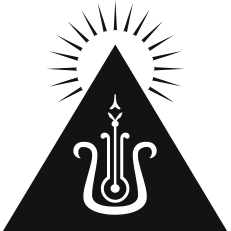The miserable loop starts with stress, which builds pressure, and then pressure creates tension, which is followed by spasms and pain. From a clinical perspective, it is much easier to treat tension compared with spasms and pain. Spasms and pain are evolved, and more established versions of tension in the body.
Spasms and pain have stubborn qualities to them, and they tend to linger for a while. Spasms and pain also come with constant displeasure and nagging annoyance that creates more-stress, more-tension, and more-pain. This is why it’s so important to understand this miserable loop and to be strategic and timely with it. As Franklyn said, an ounce of prevention is worth pound of cure. It is as true today as it was true centuries ago.
Stress, pressure, tension, muscle spasms, and pain come in tandem with each other, like in a loop. If neglected, and not appropriately addressed, in a timely fashion, the loop goes on and gets more momentum and generates more-stress, more-pressure, more-tension, more-spasms, and more-pain, and then a new loop.
This is, of course, a very simple model for stress, pressure, spasms, and pain, but I think it makes a very visual and conceptually tangible point for things that are intangible in their nature.
I consider myself a lucky person because I realized early on the effects of stress on health and the quality of our lives. I was in my early twenties. I also realized that stress is never going away and that I cannot control the amount of stress that happens in life. But one thing that came clear for me I realized that I could control how I would respond to stress, how it would affect me.
By understanding the loop of stress, tension, and pain, I could break this miserable loop of stress, pressure, tension, spasms, and pain. And that’s what I did. This process of understanding and breaking the loop helped my systems to recuperate, so I could catch a break and have more of my cognitive resources available to me to be able to deal with stresses of life, work and whatever else nonsense was coming at me.
Stress usually happens due to an external event that triggers tension. It happens because stressful events are generally problematic. Problems clearly need solutions, and not having the solution generally creates pressure. The pressure is an applied force, a load, and we all know when a force is applied tension happens.

Think of a guitar string. When you use pressure, applying the load by stretching the string to tune it, that’s pressure. Under the proper amount of tension, guitar strings sound amazing. If stretched too far, they brake. It’s very similar to us as well. When there is a healthy dose of pressure, we thrive. But as soon as the pressure gets too much, we get overwhelmed and crash under pressure.
During pressure, we go through a series of mental and emotional responses. These mental/emotional responses happen throughout our nervous system, and these events start to modify our hormone production. These processes speed up blood flow and breathing. Musculature throughout the body tenses prepared to flight or fight. That causes physical and postural changes and the body gets tighter. A prolonged period of tension in the muscles is called chronic tension. Chronic tension causes muscles to spasm. This is where things start to get really unpleasant. When muscles and tendons constantly spasm nerve branches get overly squeezed and voilà you have pain. Then pain creates new cycle of stress and rest of the chain goes into new motion.
Just like mental/emotional stress, physical stress causes tension. A long flight in an uncomfortable plain sit would do it. Extreme physical activity like an intense workout or a ten-hour workday could do it. Again if not appropriately addressed, the tension becomes chronic, that causes muscle compression, spasms, and pain.
One thing is clear; we all have tension. Different people have different levels of tension. We let go some of it, hold on to most of it and store it in the bodies. My perspective on tension is from a vantage point of a clinical massage therapist. Relaxation of tension has been a big part of my job for the past 15 years. We all handle life differently and react to different life events differently. Some people handle stress better than others. Some let trauma go through easier and naturally. They’re rare, but they do exist. Others convert the stress into tension and store it in the body in the form of chronic muscular-skeletal tension. This can cause a great many number of conditions from anxiety disorders to depression, high blood pressure, and slow rate of injury healing, just to name a few.
Never the less, one of the most powerful systems in our bodies that has evolved over millions of years of evolution is our biological ability for healing and restoration. Our body parts tend to heal very quickly when they are injured. Even the largest bone in the body, the femur, only takes six weeks to heal. Our ability to heal and restore works to it’s maximum when we are relaxed. Here is the point, when we are stressed, pressured, and tense, in spasms and pain the best thing to do is to relax so the body can go into the healing mode.
In physics, relaxation means the return of a disturbed system into equilibrium. Sounds so true. When a person is stressed, pressured and tense, they’re disturbed. When we’re relaxed, we’re balanced we are in equilibrium. So the helpful antidote for the miserable loop of stress, pressure, tension, spasms, and pain is to return to equilibrium. Especially when you break the loop at the tension stage. By that, you prevent the spasm and pain stages manifest. You can call it to nip it in the butt strategy.
Nonetheless, if you’re in pain, and things have been lingering around for a while, please see a specialist and address things adequately. Remember what Franklyn said, an ounce of prevention is worth a pound of cure.
Here are some questions for you. How do you return to balance? Are you in balance? Are you in pain? Stressed? Can you detect any tension in your body? Do you have a relaxation strategy? When was the last time you had fun and truly enjoyed your time?
Here are the ten things that I’ve adopted in my life to help me deal with my misery loop of stress, pressure, tension, muscle spasms, and pain.
- I call up friends and family when I’m stressed. Talking helps me process the stored up nonsense I carry around.
2. I go for a walk, run, swim and bike rides. Physical activity that’s play and fun goes a long way to break the loop.
3. Always having a scheduled vacation that triggers anticipatory relaxation and anticipatory enjoyment.
4. Everyone who knows me will tell you that besides giving massages, I also get them at least twice a month. If I’m under lots of stress and pressure, and I know it will be a period of tension, I switch gears into once a week.
5. Somatic training has been excellent for me as far as stress regulation. I make sure I do my deep breathing passes through the day. High oxygen levels help the nervous system function better and find solutions faster.
6. Meditation has been tremendous, of course. Having the ability to affect my own mental/emotional processes has been fundamental to my life.
7. I play. I play music, I play games with friends, and I play with my cat. Playing helps me to remove a level of importance and seriousness from my mind, which helps with relaxation.
8. Being creative. Creating graphics, composing music, writing, or designing things have been a great strategy for cognitive relaxation.
9. Exercising followed with stretching or yoga session has been an excellent way for me to release a lot of tension within a few hours. Movement is everything.
10. Making relaxation time a scheduled time has helped me to stay on top of it all.
I know that these ideas aren’t new or original, and can bring up many objections. We’ve all heard them, once too many times before. I don’t have the time. I don’t have money. I don’t have space. I’m too tired. I’m too depressed. I’m in too much pain. I know, it’s not easy and it takes a lot of effort. That’s why scheduling things helps. You just do it. Don’t listen to me, listen to Nike, and just fkn do it.
I hope this was helpful, and I hope you can break your loop of stress, pressure, tension, spasm, and pain. I hope you’ll be adding some more fun and relaxation time into your schedule, and turn the misery loop into a fun, relaxation loop.
Thanks for reading, and please let me know if you want to schedule your next relaxation session with me…
Thanks
Hayk

